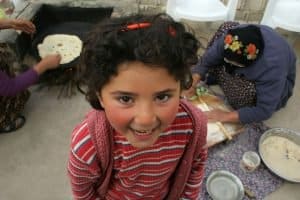 It is often claimed that bilinguals are better than monolinguals at learning languages. Now, this hypothesis has found support in a new study of brain activity, conducted at Georgetown University Medical Center and published in the journal Bilingualism: Language and Cognition.
It is often claimed that bilinguals are better than monolinguals at learning languages. Now, this hypothesis has found support in a new study of brain activity, conducted at Georgetown University Medical Center and published in the journal Bilingualism: Language and Cognition.
“The difference is readily seen in language learners’ brain patterns. When learning a new language, bilinguals rely more than monolinguals on the brain processes that people naturally use for their native language,” says the study’s senior researcher, Michael T. Ullman, PhD, professor of neuroscience at Georgetown.
“We also find that bilinguals appear to learn the new language more quickly than monolinguals,” says lead author Sarah Grey, PhD, an assistant professor in the department of modern languages and literatures at Fordham University. Grey worked with Ullman and co-author Cristina Sanz, PhD, on this study for her PhD research at Georgetown. Sanz is a professor of applied linguistics at Georgetown.
The 13 bilingual college students enrolled in this study grew up in the U.S. with Mandarin-speaking parents, and learned both English and Mandarin at an early age. The matched comparison group consisted of 16 monolingual college students, who spoke only English fluently.
The researchers studied Mandarin-English bilinguals because both of these languages differ structurally from the new language being learned. The new language was a well-studied artificial version of a Romance language, Brocanto2, that participants learned to both speak and understand. Using an artificial language allowed the researchers to completely control the learners’ exposure to the language.
The two groups were trained on Brocanto2 over the course of about a week. At both earlier and later points of training, learners’ brain patterns were examined with electroencephalogram (EEG) electrodes on their scalps, while they listened to Brocanto2 sentences. This captures the natural brain-wave activity as the brain processes language.
They found clear bilingual/monolingual differences. By the end of the first day of training, the bilingual brains, but not the monolingual brains, showed a specific brain-wave pattern, termed the P600. P600s are commonly found when native speakers process their language. In contrast, the monolinguals only began to exhibit P600 effects much later during learning — by the last day of training. Moreover, on the last day, the monolinguals showed an additional brain-wave pattern not usually found in native speakers of languages.
“There has been a lot of debate about the value of early bilingual language education,” says Grey. “Now, with this small study, we have novel brain-based data that points towards a distinct language-learning benefit for people who grow up bilingual.”
The other study co-author is psycholinguist Kara Morgan-Short, PhD, from the University of Illinois at Chicago, who also conducted her graduate work with Sanz and Ullman.
This research was supported by a National Science Foundation grant (NSF-BCS 1124144).
Bilingual children do find it easier to pick up other languages
Catalan Publisher Leaves Amid Uncertainty
 As uncertainty and anxiety over secession grip Spain’s autonomous region of Cataluña, publishing giant Planeta, the world’s leading Spanish-language publisher and second biggest publisher in France, has moved its official address out of the region’s capital, Barcelona, to Madrid.
As uncertainty and anxiety over secession grip Spain’s autonomous region of Cataluña, publishing giant Planeta, the world’s leading Spanish-language publisher and second biggest publisher in France, has moved its official address out of the region’s capital, Barcelona, to Madrid.
According to an official statement, the decision to move the publisher’s registered address was taken to “protect the interests of shareholders, employees, and the business” and will not result in the movement of employees.
Over 1,700 companies have now moved their official headquarters out of Cataluña, including the iconic Catalan bank, La Caixa, formally Caixa d’Estalvis i Pensions de Barcelona, which is Spain’s third largest financial institution. The turmoil comes as Spain’s economy has been experiencing some of the fastest growth in Europe.
The Spanish government has maintained its forecast for economic growth in 2017 at 3.1%, but revised its estimate for 2018 from 2.6% to 2.3% as a result of the crisis.
Tourism spending in Cataluña for the first two weeks of October —after the independence referendum — was down 15% from a year earlier.
Tourism accounts for 11% of Spain’s 1.1-trillion euro ($1.3 trillion) gross domestic product, with Cataluña supplying a fifth of that, as its capital, Barcelona, is one of the most popular destinations for visitors and students.
Nationwide Disparities in Support for Young ELLs

 According to a new report from the Migration Policy Institute (MPI), the support offered to young children who speak languages other than English at home varies widely from state to state, and community to community.
According to a new report from the Migration Policy Institute (MPI), the support offered to young children who speak languages other than English at home varies widely from state to state, and community to community.
“As the population of young Dual Language Learners (DLLs) continues to grow, early childhood policies that recognize and address the learning strengths and needs of these children are crucial to ensuring that all young children have the tools to build a strong foundation for future success,” said Margie McHugh, director of MPI’s National Center on Immigrant Integration Policy. “Unfortunately, the analyses we are releasing today show that far too few states have adopted or implemented such policies.”
The institute uses the term Dual Language Learners (DLLs) for children under age eight with at least one parent who speaks a language other than English at home. Analysis of census figures shows that this population has grown by about 24% since 2000, and now represents about 32% of the nation’s children in that age group.
MPI researchers Maki Park, Anna O’Toole, and Caitlin Katsiaficas found that while these 11.5 million young learners stand to benefit disproportionately from high-quality early childhood education and care (ECEC) services, they are less likely than their peers to be enrolled in such programs, which may contribute to lags in kindergarten readiness and later academic achievement. The factors responsible for this lower enrollment include language barriers and other obstacles that impede access to high-quality ECEC programs, as well as risk factors including higher levels of poverty in DLL households and lower parental educational attainment.
The MPI report includes a series of fact sheets that use U.S. Census Bureau data to outline the key sociodemographic characteristics for these children across the U.S. and in the 30 states with the largest such populations. Among the characteristics covered for this child population: age and enrollment, race/ethnicity, income and poverty levels, parental English proficiency and educational attainment, and top home languages spoken.
The profiles also use information from surveys of state ECEC agencies to denote the presence or absence of policies and practices that are important to the success of DLL children, such as support for bilingual education and services for limited English proficient (LEP) families and early childhood care providers.
The profiles also provide national and state-level information on fourth grade academic outcomes by English proficiency, as a means of helping understand the lags in achievement that DLLs experience later in their academic trajectories that may be due in part to inadequate or ineffective ECEC services. English Learner (EL) students recorded lower fourth grade reading and math scores on the National Assessment of Educational Progress: in reading, 189 versus 226 for non-EL students, and in math 218 versus 243.
Among the MPI findings:
- There are 11.5 million DLL children in the U.S., with more than half of them living in just a handful of states: California, 2.7 million; Texas, 1.75 million; New York, 893,000; Florida, 781,000; and Illinois, 495,000.
- DLL children are enrolled in pre-K programs at lower rates: 41.5 percent for DLL children ages 3–4 nationally, compared to 47.9 percent for those in English-only households.
- While bilingualism and cultural diversity represent important assets for the development of DLL children, their families exhibit higher risk factors that might impede their access to high-quality ECEC programs, including higher instances of poverty (58 percent of DLLs nationwide live in low-income families, as compared with 43 percent of non-DLLs). And while just 6 percent of parents of young children who only speak English have less than a high school education, the rate rises to 26 percent for the parents of DLLs. The parents of DLLs also exhibit high rates of limited English proficiency, with 41 percent reporting speaking English less than “very well.”
- Sixty-two percent of DLL children are Hispanic, while 15 percent are Asian and 6 percent Black. The top five languages spoken by parents of DLLs: Spanish (59 percent); Chinese (3.3 percent); and Tagalog and Arabic (1.9 percent each).
“Our findings should demonstrate to states the significant stake they have in addressing the needs of their growing immigrant and DLL child populations,” said MPI policy analyst Maki Park, who led work on the fact sheet series. “Our mapping of key policies regarding Dual Language Learners should give actors both within and outside early childhood education and care systems a roadmap of measures that can be implemented to close gaps in opportunity and support academic success for all children.”
Read the U.S. and state fact sheets here: www.migrationpolicy.org/research/dual-language-learners-demographic-and-policy-profiles.
U.S. Team Wins ” Chinese Bridge ” Contest

 A team from the U.S. has won the 15th “Chinese Bridge” language proficiency competition for secondary school students in Kunming, the capital of southwest China’s Yunnan Province.
A team from the U.S. has won the 15th “Chinese Bridge” language proficiency competition for secondary school students in Kunming, the capital of southwest China’s Yunnan Province.
During the final round on Saturday evening, U.S. team beat out the winning teams from each continent: Russia, Kyrgyzstan, Mozambique, and Australia.
The series of contests, which focuses on spoken Chinese, Chinese culture and art performances, attracted 320 teachers and students from 96 countries and regions.
During their stay in Kunming, the participants visited local families and communities to experience folk arts and traditions.
Since 2002, the headquarters of the Confucius Institute in Beijing has organized an annual series of Chinese Bridge language competitions
Study Tracks Progress of English Learners
 A recent study out of Philadelphia tracked kindergartners who were learning English and found that four years later almost 60% had achieved proficiency, but more students had become proficient in oral language (listening and speaking English) than in literacy (reading and writing English). There were also major discrepancies between which groups of students had and had not mastered the language.
A recent study out of Philadelphia tracked kindergartners who were learning English and found that four years later almost 60% had achieved proficiency, but more students had become proficient in oral language (listening and speaking English) than in literacy (reading and writing English). There were also major discrepancies between which groups of students had and had not mastered the language.
Not surprisingly, considering socio-economic factors and the prevalence of Spanish speakers in Philadelphia, students whose home language was Spanish were considerably less likely to reach proficiency than any other subgroup.
The study examined the progress toward English proficiency of English learners (Els) who entered the School District of Philadelphia in kindergarten during 2008–09 through 2011–12.
Using data from these four kindergarten cohorts, English proficiency upon entering school, the percentage who achieved proficiency within four years, and characteristics of students who were more likely to reach proficiency within four years were examined.
KEY FINDINGS
About two-thirds of kindergarten EL students knew and used minimal English when they entered school: 49% of the kindergarten EL students placed at the lowest English language proficiency (ELP) level at entrance to school (ELP Level 1), and an additional 19% placed at ELP Level 2. About 32% of the kindergarteners placed at ELP Levels 3, 4, 5, or 6.
The percentage of students who were more proficient in English at school entry increased across cohorts between 2008–09 and 2011–12: 27% of students in the 2008–09 cohort placed at ELP Level 3 or above, compared to 41% of students in the 2011–12 cohort.
Almost 60% of kindergarten EL students achieved English proficiency within four years of starting school. By the end of first grade, 12% of the ELs who had entered in kindergarten had achieved English proficiency, and an additional 17% were proficient by the end of second grade. By the end of third grade, an additional 30% had reached English proficiency.
Some groups of students were more likely than others to achieve proficiency within four years. English proficiency rates were higher among female students and students who were not identified with a disability. Relative to Spanish speakers, students who spoke Arabic, Chinese, Khmer, or Vietnamese were more likely to achieve English proficiency within four years.
Students who were more proficient in English when they entered school were more likely to reach proficiency within four years: 53% of students who entered at ELP Level 1 reached proficiency within four years, compared to 62% and 68% of students who entered at ELP Levels 2 and 3, respectively.
More students became proficient in oral language than in literacy. Within four years, 81% of kindergarten ELs were proficient in oral language, compared to 63% in literacy. A key driver of the lower proficiency rate in literacy is writing, with a 48% proficiency rate.
The full report can be downloaded at https://3l59p62inu0t2sj11u1hh23l-wpengine.netdna-ssl.com/wp-content/uploads/2017/06/PERC-ELL-Trajectory-Web-version-1.pdf.
IMPLICATIONS FOR POLICY AND
PRACTICE
These analyses can inform goal setting for schools tracking kindergarten ELs’ progress toward English proficiency. This study can help to set ambitious but achievable proficiency targets for future cohorts. Targets for ELs could be set based on students’ entering English proficiency levels.
High-quality prekindergarten for ELs may boost English proficiency at entrance to kindergarten. Philadelphia’s universal prekindergarten program provides an opportunity to help the city’s youngest ELs begin school with less catching up to do in English. Research indicates that quality prekindergarten experiences can help ELs make rapid growth in both English proficiency and academic skills.
An area for continued work is supporting ELs in developing proficiency in writing. Given the substantial disparity in proficiency rates between writing and the other three language domains (speaking, listening, and reading), the district may want to develop a stronger focus on supporting these students in becoming effective writers in English.
America Becoming More Multilingual

 According to an analysis by the Center for Immigration Studies (CIS) of newly released Census Bureau data for 2016, a record 65.5 million U.S. residents over the age of five spoke a language other than English at home. The number is up six million since 2010 and has increased by nearly 34 million since 1990. As a share of the population, over 20% U.S. residents now speak a language other than English at home.
According to an analysis by the Center for Immigration Studies (CIS) of newly released Census Bureau data for 2016, a record 65.5 million U.S. residents over the age of five spoke a language other than English at home. The number is up six million since 2010 and has increased by nearly 34 million since 1990. As a share of the population, over 20% U.S. residents now speak a language other than English at home.
Of languages with more than 400,000 speakers, the largest percentage increases since 2010 were among speakers of Arabic (up 42%), Hindi (up 33%), Urdu (up 22%), Chinese (up 20%), Persian and Haitian (each up 15%), and Gujarati (up 14%).
The largest numerical increases 2010 to 2016 were among speakers of Spanish (up 3.5 million), Chinese (up 564,000), Arabic (up 366,000), Hindi (up 201,000), Telugu (up 143,000), Vietnamese (up 129,000), Tagalog (up 128,000), Haitian (up 109,000), Bengali (up 101,000), Tamil (up 89,000), and Urdu (up 86,000). Telugu and Tamil are spoken in India and Tagalog is the national language of the Philippines; Bengali is spoken in India and is also the national language of Bangladesh.
Languages with more than a million speakers in 2016 were Spanish (40.5 million), Chinese (3.4 million), Tagalog (1.7 million), Vietnamese (1.5 million), Arabic (1.2 million), French (1.2 million), and Korean (1.1 million).
CIS researchers estimate that nearly one in four public school students now speaks a language other than English at home. In California, the estimate is 44% , while in Texas, New Mexico, New Jersey, New York, and Nevada, it is estimated that over a third of school-age children speak a language other than English at home.
The analysis was carried out by Karen Zeigler, a demographer and Steven A. Camarota, the director of research at the CIS, which supports decreasing immigration.
France Welcomes Community College Students

 In another move to promote relations between these old allies, the Cultural and Scientific Services of the French Embassy in Washington launched a two-part program entitled Community College Abroad in France, in partnership with Community Colleges for International Development and the n+i network (a network of 50 top engineering schools in France). The Community College Abroad in France program includes two components: a ten-day non-degree-granting summer boot camp, and a four-year degree-granting program.
In another move to promote relations between these old allies, the Cultural and Scientific Services of the French Embassy in Washington launched a two-part program entitled Community College Abroad in France, in partnership with Community Colleges for International Development and the n+i network (a network of 50 top engineering schools in France). The Community College Abroad in France program includes two components: a ten-day non-degree-granting summer boot camp, and a four-year degree-granting program.
Part of the Transatlantic Friendship and Mobility Initiative, a dual initiative of the U.S. Department of State and the French Ministry of Foreign Affairs launched in 2014 to increase and diversify student mobility cross-Atlantic, the community college program echoes the French Embassy’s mission to reach new audiences—in this case, American students traditionally underrepresented in study abroad programs.
Seventeen community college students from across the U.S. specializing in engineering and environmental science took part in this June’s ten-day non-degree-granting pilot boot camp in Paris. The program included a series of professional and scientific visits to learn about air quality control (Ballon d’air de Paris), environmental management practices for water distribution (Usine d’Austerlitz), innovative urban transportation, and lighting management in Paris.
Offering graduate studies abroad, the four-year degree-granting program in France is open to a small group of hand-selected students following the completion of their two-year associate degrees at U.S. community colleges with honors. Selected students are offered the opportunity to complete a Diplôme d’ingénieur (engineering degree) within four years of graduating from a community college.
Students begin the program with a pre-Diplôme d’ingénieur, a preparatory year in France, which allows them to become acquainted with new methods of study and to strengthen their French language skills. This is followed by a three-year work-study Diplôme d’ingénieur at one of the top-50 engineering schools of the n+i network.
The program is designed to offer students professionalized training while enabling them to self-finance their degrees. Students attend classes part-time while completing paid part-time internships.
The French Embassy also offers one student a scholarship to finance the pre-Diplôme d’ingénieur year in France. This year, the laureate is Daniela Markovic from the honors college at Lonestar College in Houston Texas. She will start July 2017.
Community College Abroad in France aims to open up the classic junior-year-abroad experience to community college students. Amid soaring tuition prices in the U.S., they make up a significant portion of America’s post-high-school student body but rarely find the means or programs to do some of their studies internationally.
According to the Community College Research Center at Columbia University, 39% of all undergraduates in the 2015–16 school year in the U.S. were at two-year community colleges, but only 2% of them studied abroad.
Greek for Young Refugees
 Greek schools are welcoming in more refugee and migrant children who have been stranded in the country. Major efforts by the Greek Ministry of Education, Research, and Religious Affairs supported by UNICEF to get as many children as possible into school are seen as a crucial step to integrate refugee and migrant children into Greek society and to turn the fundamental right of education into a reality for each and every child in the country.
Greek schools are welcoming in more refugee and migrant children who have been stranded in the country. Major efforts by the Greek Ministry of Education, Research, and Religious Affairs supported by UNICEF to get as many children as possible into school are seen as a crucial step to integrate refugee and migrant children into Greek society and to turn the fundamental right of education into a reality for each and every child in the country.
“Without education, a generation of children in Greece will be lost, without necessary skills to contribute to their countries and economies and at greater risk of exclusion. Getting children whose lives have been on hold back into school will help them communicate and socialize with Greek children and help them rebuild their futures,” says Laurent Chapuis, the country coordinator for UNICEF’s refugee and migrant response in Greece. “It is not only crucial for the mental health and psychosocial well-being of refugee and migrant children, it will reactivate their development and bring back a sense of stability in their unsettled lives.”
“We applaud the generous plan and tireless efforts made by the Greek government to welcome refugee and migrant children in school,” says Sofia Tzitzikou, the president of the Hellenic National Committee for UNICEF. The Ministry of Education is committed to opening the doors of its public schools to as many refugee and migrant children as possible, by establishing reception classes for children residing in temporary sites as well as those living in urban accommodation.
“The inclusion of refugee and migrant children in Greek schools has only positive aspects as Greek children—not only will they learn in a multicultural, peaceful, and caring environment, all these children will also be fully vaccinated before they enroll in school just in the same way as Greek children,” says Tzitzikou. “The Ministry of Education and the Ministry of Health are working closely together to guarantee mandatory vaccination and preventative health examinations will take place before the start of reception classes. Once enrolled, refugee and migrant children will be given intensive Greek language support to accelerate their language acquisition.”
Some refugee children have missed up to two and a half years of schooling during their journeys, and less than a third of the 12,000 children of school age have had access to formal education. Language barriers and capacity within the system, stress and trauma leading to poor concentration and high drop-out rates, and resistance to learning Greek as many hope to continue their journeys to other parts of Europe are among the factors that have kept children out of school.
French in ‘Mortal Danger’ of Gender Neutrality

The Académie Française, the world’s authority on the French language, has issued a bleak warning against “inclusive writing” which promotes the use of gender-neutral words, claiming that: “The multiplication of the orthographic and syntactic marks that [inclusive writing] requires would lead to a disunited language, disparate in its expression, which would create confusion verging on incomprehensibility.”
The recent movement to replace default masculine nouns, such as les soldats, used when referring to mix of male and female soldiers with the gender-neutral les soldat(e)s, has been reinforced by a barrage of revelations of sexual abuse in France triggered by the Harvey Weinstein case in the U.S.
The academy’s statement went on to say that: “More than any other institution, the Académie Française is sensitive to developments and innovations in the language, since its mission is to codify them. On this occasion, it is less as a guardian of the norm than a guarantor of the future that it raises a cry of alarm. Faced with this ‘inclusive’ aberration, the French language is now in mortal danger.”
See below for full text of statement (in French):
Déclaration de l’Académie française sur l’écriture dite “inclusive”
Le 26 octobre 2017
Déclaration de l’Académie française
DÉCLARATION de l’ACADÉMIE FRANÇAISE
sur l’ÉCRITURE dite « INCLUSIVE »
adoptée à l’unanimité de ses membres
dans la séance du jeudi 26 octobre 2017
Prenant acte de la diffusion d’une « écriture inclusive » qui prétend s’imposer comme norme, l’Académie française élève à l’unanimité une solennelle mise en garde. La démultiplication des marques orthographiques et syntaxiques qu’elle induit aboutit à une langue désunie, disparate dans son expression, créant une confusion qui confine à l’illisibilité. On voit mal quel est l’objectif poursuivi et comment il pourrait surmonter les obstacles pratiques d’écriture, de lecture – visuelle ou à voix haute – et de prononciation. Cela alourdirait la tâche des pédagogues. Cela compliquerait plus encore celle des lecteurs.
Plus que toute autre institution, l’Académie française est sensible aux évolutions et aux innovations de la langue, puisqu’elle a pour mission de les codifier. En cette occasion, c’est moins en gardienne de la norme qu’en garante de l’avenir qu’elle lance un cri d’alarme : devant cette aberration « inclusive », la langue française se trouve désormais en péril mortel, ce dont notre nation est dès aujourd’hui comptable devant les générations futures.
Il est déjà difficile d’acquérir une langue, qu’en sera-t-il si l’usage y ajoute des formes secondes et altérées ? Comment les générations à venir pourront-elles grandir en intimité avec notre patrimoine écrit ? Quant aux promesses de la francophonie, elles seront anéanties si la langue française s’empêche elle-même par ce redoublement de complexité, au bénéfice d’autres langues qui en tireront profit pour prévaloir sur la planète.


 Listen to Language Magazine editor Daniel Ward interviewed by Larry Jacobs on EdTalk Radio: http://www.blogtalkradio.com/edutalk/2017/11/02/the-importance-of-language-educationcross-curricular
Listen to Language Magazine editor Daniel Ward interviewed by Larry Jacobs on EdTalk Radio: http://www.blogtalkradio.com/edutalk/2017/11/02/the-importance-of-language-educationcross-curricular
